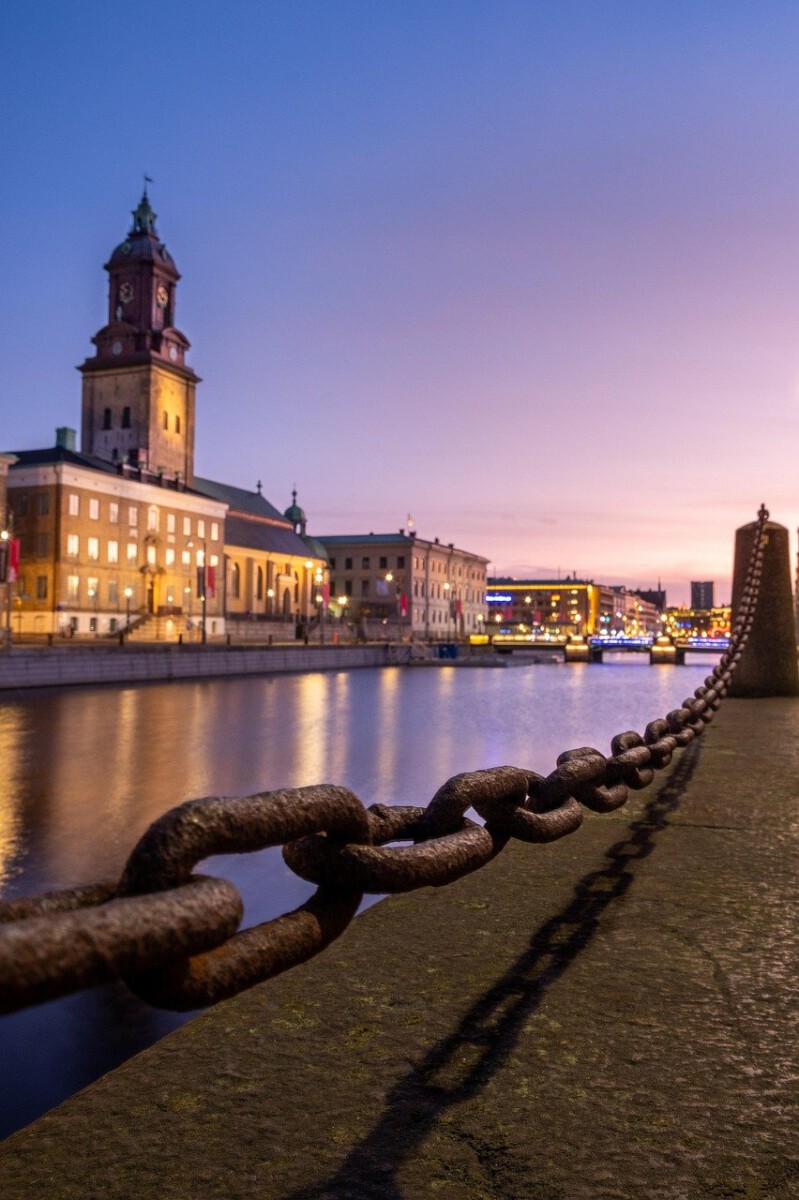Sweden: Setting the Standard for Clean Living

Sweden continues to top international rankings for cleanliness and environmental health, boasting an impressive 86.5 score in the 2023 Environmental Performance Index (EPI). The Swedish government’s commitment to sustainability is reflected in its ambitious target to reach net-zero greenhouse gas emissions by 2045. As of early 2024, more than half of Sweden’s electricity comes from renewable sources, with wind and hydroelectric power leading the way. Urban recycling rates in Sweden are among the highest globally, with some municipalities reporting over 99% of waste being recycled or used for energy. Public transportation is prioritized, resulting in lower car ownership rates and reduced emissions. The country’s efforts are underpinned by a strong legal framework and proactive policies, such as banning certain single-use plastics in 2023. Swedish citizens routinely cite environmental protection as a top concern, fostering a culture where sustainability is second nature.
Finland: Where Nature and Innovation Meet

Finland’s reputation for pristine forests and clean cities is backed by hard data, with an EPI score of 86.3 in 2023. The Finnish government invested over €1 billion in green technology initiatives in 2024, aiming to further cut emissions and improve waste management. Around 75% of Finland’s land area is covered by forests, which play a vital role in absorbing carbon dioxide and preserving biodiversity. The country’s air quality regularly ranks among the best in Europe, and Helsinki’s new “Circular Economy Roadmap” is set to drastically reduce landfill waste by 2030. Finnish schools incorporate environmental education from an early age, ensuring the next generation is prepared to uphold these high standards. Water quality is another point of pride, with advanced filtration systems ensuring that tap water is safe and clean nationwide. Finland’s approach blends tradition with innovation, using both modern technology and time-tested conservation practices to protect its unique environment.
Denmark: Cycling Toward a Cleaner Future

Denmark scored 85.9 in the 2023 EPI, reinforcing its status as a pioneer in environmental stewardship. Nearly 50% of Danish electricity came from wind power in 2024, a testament to the country’s extensive investment in renewables. Copenhagen’s cycling infrastructure is world-renowned, with more bicycles than cars on city streets and over 400 kilometers of dedicated bike lanes. The Danish government launched a national initiative in late 2023 to halve single-use plastic waste by 2025, pushing supermarkets and manufacturers to adopt biodegradable alternatives. Public transit is widely used, reducing reliance on fossil fuels and lowering urban air pollution. Denmark’s “Green Transition Fund,” established in 2024, supports startups focused on clean energy, further accelerating innovation. These efforts have not only improved environmental quality but also inspired similar initiatives across Europe.
New Zealand: Guardians of Natural Beauty

New Zealand’s natural landscapes are legendary, but its environmental policies are equally noteworthy. With an EPI score of 84.7 in 2023, the country excels in biodiversity conservation and resource management. In 2024, the government kicked off a campaign to plant one billion trees by 2028, focusing on native species to restore ecosystems and capture carbon. More than 30% of New Zealand’s territory is designated as protected land, including dozens of national parks and marine reserves. The country’s water quality initiatives ensure that rivers and lakes remain clean, supporting both wildlife and agricultural communities. Efforts to promote sustainable tourism have paid off, with new regulations requiring tour operators to meet strict environmental standards. Urban centers like Wellington and Auckland have adopted comprehensive recycling programs, further reducing landfill waste. These combined actions help maintain New Zealand’s reputation as a clean, green destination.
Iceland: Powered by Nature

Iceland stands out for its near-total reliance on renewable energy, with over 85% of its power generated from geothermal and hydropower sources as of 2024. The country’s 87.2 EPI score in 2023 highlights exceptional air and water quality, with strict pollution controls in place for industries and agriculture. In 2024, Iceland introduced incentives for electric vehicle adoption, aiming to make its entire public transport fleet emission-free by 2030. Waste-to-energy plants process most of the country’s municipal waste, minimizing landfill use and producing clean electricity. Iceland’s unique volcanic landscapes are protected by rigorous conservation laws, balancing tourism with environmental preservation. The government’s “Green Steps” program, rolled out in early 2024, supports local businesses in reducing their ecological footprint. These measures ensure that both residents and visitors enjoy some of the cleanest air and water in the world.
Switzerland: Precision in Environmental Protection

Switzerland’s 85.5 EPI score in 2023 reflects its meticulous approach to environmental management. The nation boasts a comprehensive recycling system, with over 50% of municipal waste recycled in 2024. Swiss cities are known for their cleanliness, with strict littering laws and well-maintained public spaces. The public transportation network is highly efficient, reducing private car usage and minimizing emissions. In 2024, Switzerland set a new target to cut greenhouse gas emissions by 50% by 2030, aligning with EU climate policies. Water quality remains exceptionally high, thanks to state-of-the-art treatment plants and regular monitoring. Local communities take part in annual clean-up events, highlighting the strong culture of civic responsibility. These efforts are supported by ongoing innovation in green technology and urban planning.
Norway: Championing Renewable Energy

Norway’s environmental credentials are built on its commitment to renewable energy, with 98% of electricity sourced from hydropower as of 2024. The country’s EPI score of 86.0 in 2023 underscores its clean air and effective environmental policies. In 2024, Norway accelerated its plan to phase out fossil fuel vehicles, with electric cars accounting for over 80% of new vehicle sales. The government has expanded protected areas, safeguarding critical habitats for wildlife and promoting sustainable fisheries. Oslo, the capital, was named Europe’s Green Capital in 2024 for its efforts to reduce emissions and promote green urban living. Waste management is prioritized, with advanced sorting and recycling facilities across the country. Norway’s approach combines strict regulation with generous incentives, encouraging both individuals and companies to adopt sustainable practices.
India: Battling Pollution on Multiple Fronts

India ranked 168th in the 2023 EPI, with a score of 39.2, highlighting significant environmental challenges. Urban air pollution remains a critical issue, with particulate matter levels in cities like Delhi and Kolkata far exceeding safe limits throughout 2024. The World Health Organization linked over 1.5 million deaths to air pollution-related diseases in India last year. Waste management infrastructure is underdeveloped, with only about 30% of urban waste properly processed, leading to widespread landfill overflow and water contamination. The government’s National Clean Air Programme has set ambitious targets, but enforcement remains inconsistent. Rivers such as the Ganges continue to suffer from industrial and municipal pollution despite ongoing clean-up efforts. India’s rapid urbanization and population growth put further strain on natural resources, making comprehensive policy reform urgently needed.
China: Progress Amid Persistent Hurdles

China’s EPI ranking of 120th in 2023, with a score of 54.3, reflects ongoing struggles with air and water pollution despite substantial progress in some areas. In 2024, the central government unveiled a five-year plan aiming to reduce carbon emissions by 18% by 2025, but coal remains a dominant energy source, complicating efforts to improve air quality. Major cities like Beijing and Shanghai frequently experience severe smog, prompting temporary factory shutdowns and public health advisories. While China leads the world in renewable energy capacity, with over 400 GW of installed solar power by 2024, industrial emissions and waste management remain significant challenges. Many municipalities lack comprehensive recycling systems, contributing to urban waste accumulation. River and groundwater pollution continue to threaten food safety and public health, particularly in rural areas.
Bangladesh: Facing Environmental Vulnerability

Bangladesh ranked 179th in the 2023 EPI, scoring just 36.8, which highlights its acute environmental vulnerability. Rapid industrialization and urban expansion have led to severe air and water pollution, with over 80% of the country’s surface water found to be contaminated in a 2024 United Nations report. Dhaka, the capital, regularly records some of the world’s highest levels of airborne particulates. Waste management systems are underdeveloped, with only 40% of urban waste being collected and processed, leading to frequent flooding and waterborne diseases. Climate change compounds these issues, as rising sea levels and unpredictable weather patterns threaten both infrastructure and agriculture. The government has initiated projects to improve waste collection and recycling, but progress is hampered by limited resources and enforcement challenges. Bangladesh’s situation underscores the urgent need for both local reforms and international support.







